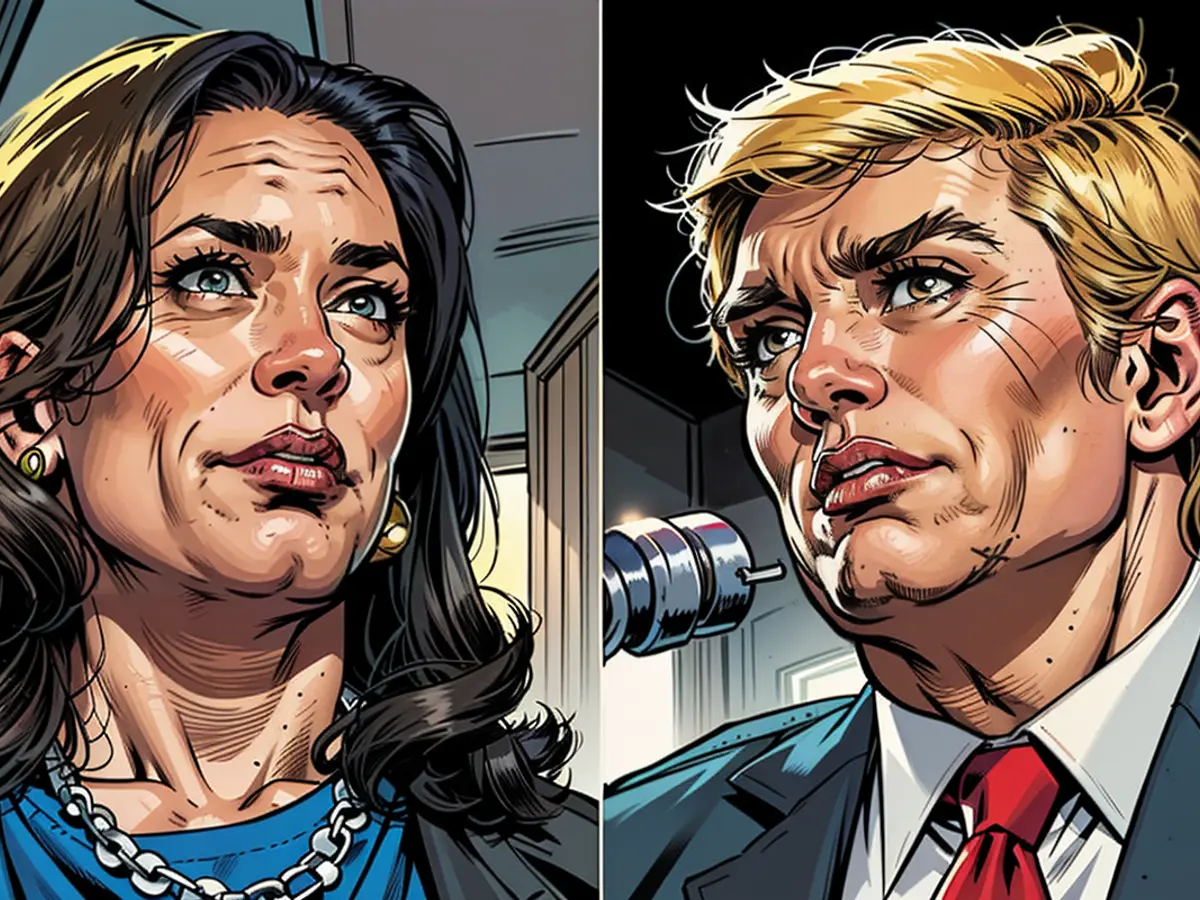Harris and Trump advocate for resuming domestic manufacturing. This endeavor proves to be a significant challenge.
Under the administration of President Biden, the United States manufacturing sector has received billions of dollars in investments, such as $53 billion from the CHIPS and Science Act to boost the semiconductor industry and a bipartisan $1.2 trillion infrastructure spending package passed by Congress. Private investment has also increased significantly in recent years. These investments have led to an increase in construction spending by manufacturers, according to government data.
The US economy started to recover after being hit hard by the Covid-19 pandemic, but the momentum didn't last long. Manufacturing employment levels still haven't returned to pre-Great Recession levels, and the total number of manufacturing jobs in August was only slightly higher than in February 2020. In fact, manufacturers have lost jobs in four of the past eight months through August, according to Labor Department data. Surveys of manufacturers haven't looked particularly promising either.
Although there hasn't been a manufacturing revitalization under Biden, but rather a gradual recovery from the pandemic, it could still be a matter of time before the investments start to pay off. However, with the presidential election approaching in less than two months, it might be difficult to convince voters.
Vice President Harris gave a speech outlining some of her economic policies in Pittsburgh, including plans to cut taxes for middle-class Americans, increase a tax deduction for startups, and reform construction project regulations.
"We will invest in biomanufacturing and aerospace; remain dominant in AI and quantum computing, blockchain and other emerging technologies; expand our lead in clean energy innovation and manufacturing," Harris said.
Trump also outlined his own economic vision during a speech in Savannah, saying that if elected he plans to lower corporate taxes, strengthen tariffs, and cut regulations. According to Trump, this would lead to a mass exodus of manufacturing from countries like China to the US.
The industry's challenges
Manufacturing is facing a number of challenges, most of which stem from the broader economic landscape.
Sluggish demand and high interest rates are the main issues for manufacturing companies, according to recent surveys by the Institute for Supply Management and S&P Global. This has put production companies in a wait-and-see mode and could be a concerning sign for the industry's future.
"The combination of falling orders and rising inventory sends the gloomiest forward-indication of production trends seen for one and a half years, and one of the most worrying signals witnessed since the global financial crisis," Chris Williamson, chief business economist at S&P Global Market Intelligence, said in a news release.
Although manufacturers have received grant funding in recent years, many are hesitant to speed up hiring or ramp up production due to uncertainty around demand. Additionally, many manufacturers are currently hesitant to invest in capital or inventory due to current federal monetary policy and election uncertainty, which has led many employers to put their hiring plans on hold.
Manufacturers are also dealing with persistent price pressures that are now "rising at the fastest pace since April of last year," according to S&P Global. These costs could either eat away at employers' bottom line or get passed on to consumers in the form of higher prices.
There are also challenges specific to certain sectors of the manufacturing industry. For example, Boeing, America's largest exporter, is facing its own set of problems that have plunged it into an even deeper financial hole. Meanwhile, US automakers are struggling with stiff competition from Chinese car manufacturer BYD, which has flooded the global market with its electric vehicles.
Another challenge is the fact that labor remains cheaper in many other countries compared to the US, where manufacturers have had to contend with labor union demands in recent years.
Looking ahead
It's not all bad news for the manufacturing industry. The Federal Reserve recently lowered interest rates for the first time in over four years and signaled additional rate cuts by year's end. This could greatly benefit companies of all sizes by making it cheaper to take out a business loan.
Lower interest rates could also boost consumer demand, or at least keep it from deteriorating into recession territory. However, there's no sign of manufacturing starting to recover just yet, which has been perplexing.
"As the Federal Reserve’s policy rate moves back towards neutral, will the economic dominoes stand back up? We’re not so sure," Lauren Goodwin, economist and chief market strategist at New York Life Investments, said in a Tuesday note. "The manufacturing sector has been in contraction for more than 20 months now, despite consistent construction related to investment in the semiconductor supply chain."
She added that "a Federal Reserve that is easing off the brakes is one that may help the economic cycle last longer. But it’s not clear that economic activity will improve."
Despite the challenges faced by the manufacturing industry, such as sluggish demand and high interest rates, President Biden's administration has invested billions of dollars into the sector to boost various sectors, including semiconductors and infrastructure. This investment could potentially help businesses in the industry overcome these challenges and stimulate economic growth.
The ongoing negotiations between the US and China regarding tariffs and trade policies also have a significant impact on the manufacturing business, as lower tariffs could encourage more manufacturing activities to return to the US, leading to potential job growth and economic stimulus.








